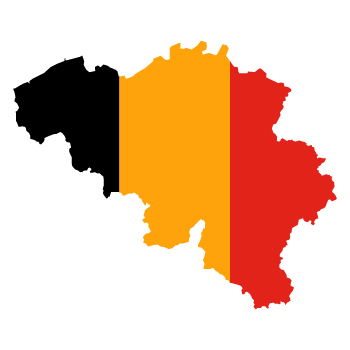Belgium Dutch to English Translation
The Unique Challenges of Belgium Dutch to English Translation
Belgium Dutch to English translation presents a unique set of challenges that require careful attention to detail. The first challenge stems from the fact that Belgium has three official languages: Dutch, French, and German. While the majority of the population speaks Dutch, the influence of the French and German languages cannot be ignored. This means that when translating from Belgium Dutch to English, it is important to be aware of any potential linguistic nuances that these other languages may have influenced.
Another challenge lies in the regional variations of the Dutch language. Belgium is a small country, but it is divided into different regions, each with its dialects and variations of the Dutch language. Translators must be familiar with these regional differences and be able to adapt their translations accordingly. Furthermore, idiomatic expressions and cultural references can pose challenges in Belgian Dutch to English translation. These expressions often have specific meanings that may not have a direct equivalent in English. Translators must find ways to convey the intended meaning without losing the cultural context. Lastly, there is the challenge of keeping up with evolving languages. Languages are constantly changing, and new words and phrases are introduced regularly. Translators need to stay up-to-date with these changes to ensure accurate and up-to-date translations. In summary, Belgium’s Dutch-to-English translation requires a thorough understanding of the linguistic nuances, regional variations, and cultural context. Translators must be adaptable, knowledgeable, and skilled in order to provide high-quality translations that accurately convey the intended message to the target audience.


Cultural Differences and Linguistic Nuances
Belgian Dutch to English translation is not just about converting words from one language to another; it also involves understanding and navigating the cultural differences and linguistic nuances that exist between these two languages.
One important aspect to consider is the cultural context. English and Dutch have different cultural references, idiomatic expressions, and ways of expressing certain concepts. A skilled Dutch translator must be able to accurately convey these nuances in the target language to ensure that the translated content is not only linguistically accurate but also culturally appropriate for the English-speaking audience. Another challenge is the presence of regional variations in the Dutch language. Different regions in Belgium have their dialects and variations of Dutch. A proficient Dutch translator should be familiar with these regional differences and be able to adapt the translation accordingly. This is crucial for accurately conveying the intended message to the target audience, as regional variations can greatly impact the meaning and tone of a text. Moreover, a Dutch translator needs to understand the influence of other languages on the Dutch language, such as French and German. These languages have left their mark on the vocabulary, grammar, and even pronunciation of Dutch. A thorough understanding of these linguistic influences is necessary for providing accurate and culturally sensitive translations. To achieve accurate Belgian Dutch to English translation, it is crucial to work with a professional translation company or a native English speaker with expertise in Dutch translation. Their wide range of experience and knowledge of both languages will ensure that cultural differences and linguistic nuances are taken into account, resulting in a translation that accurately conveys the intended message to the English-speaking audience.
Read more about the certified translation of Belgium.
Literal vs. Idiomatic Expressions in Translation
Translating idiomatic expressions can be one of the trickiest aspects of Belgian Dutch to English translation. Idioms are phrases or terms that have a symbolic meaning that is different from the literal meaning of the words used. They are unique to a language and culture, and translating them directly into English often results in confusion or misinterpretation.
A literal translation of an idiomatic expression may not accurately convey the intended meaning, as the cultural and linguistic context can differ between the two languages. For example, the Dutch expression “De kat uit de boom kijken” literally translates to “To look at the cat in the tree.” However, the idiomatic meaning is to wait and see how a situation develops. A native English speaker would not understand the intended purpose if the translation was done word-for-word. To successfully translate idiomatic expressions, a skilled translator must understand the cultural connotations and find equivalent expressions or phrases in the target language that convey the same meaning. This requires not only language proficiency but also cultural sensitivity and a deep understanding of the idiomatic expressions in both languages. Using an online translator or relying solely on a literal translation can result in inaccurate and confusing translations. It is best to work with a professional translator or a native English speaker with expertise in Dutch translation to ensure that idiomatic expressions are accurately conveyed in the target language. By navigating the challenges of everyday expressions, translators can ensure that the translated content maintains the same intended meaning and impact in English as it does in Belgium Dutch. This is crucial for effective communication and ensuring that the translated content resonates with the target audience.
Read more about the Dutch-to-English translation service.


Handling Dialects and Slang in Translation
Handling dialects and slang in Belgium Dutch to English translation can be a daunting task, but with the right approach, it can be done effectively. Dialects are regional variations of a language, and Belgium is no exception. Each region in Belgium has its dialects and nuances, which can greatly impact the translation process.
To handle dialects, it is important to work with translators who are native speakers of the specific dialect. Native speakers have an innate understanding of the nuances and can accurately translate the content while maintaining the regional flavor. Additionally, conducting thorough research on the specific dialect and consulting with local experts can provide valuable insights and ensure accurate translations. Slang is another challenge that translators must navigate. Slang terms and expressions can be ever-changing and unique to specific regions or communities. It is important to stay up-to-date with current slang trends and understand the context in which they are used. This requires ongoing research and familiarity with the target audience. Furthermore, translators must strike a balance between maintaining the original meaning of the slang and ensuring that the English-speaking audience understands it. It may be necessary to find equivalent slang terms or expressions in English that convey a similar meaning. Handling dialects and slang in Belgium Dutch to English translation requires a combination of linguistic expertise, cultural understanding, and knowledge of the target audience. By working with translators who have these skills, you can ensure that your translations accurately capture the regional nuances and resonate with the English-speaking audience.
Common Mistakes to Avoid in Belgium Dutch to English Translation
When it comes to Belgian Dutch to English translation, there are several common mistakes that translators should avoid to ensure accuracy and effectiveness. One common mistake is relying too heavily on online translators. While these tools can be helpful for getting a general idea of a translation, they often lack the linguistic and cultural nuances necessary for an accurate translation. Another mistake is ignoring regional variations and dialects in the Dutch language.
Belgium is a small country with diverse linguistic communities, each with its unique dialects and variations of Dutch. Translators need to be familiar with these regional differences and adapt their translations accordingly. Additionally, neglecting to consider the cultural context and idiomatic expressions can lead to misunderstandings in the translated content. Translators must have a deep understanding of the cultural references and idiomatic expressions in both languages to accurately convey the intended meaning. Lastly, not staying up-to-date with evolving languages can result in outdated translations. Languages are constantly changing, with new words and phrases being introduced regularly. Translators should make an effort to stay current with these changes to ensure accurate and up-to-date translations. By avoiding these common mistakes and employing best practices in Belgian Dutch to English translation, translators can ensure that their translations are accurate, culturally appropriate, and effectively convey the intended message to the English-speaking audience.
Best Practices for Achieving Accurate Translation Results
To achieve accurate translation results in Belgium Dutch to English translation, it is important to follow certain best practices. Firstly, it is essential to work with a professional translator or a native English speaker who has expertise in Dutch translation. Their in-depth knowledge of both languages will ensure accurate translations that capture the linguistic nuances and cultural context.
Additionally, thorough research and understanding of the subject matter are crucial. This includes familiarizing oneself with the specific terminology and jargon used in the content being translated. Keeping up-to-date with evolving languages and new vocabulary is also important to ensure accurate and up-to-date translations. Using reliable reference materials, such as dictionaries and style guides, can help maintain consistency and accuracy throughout the translation process. Collaboration and communication with the client or subject matter experts can also provide valuable insights and clarifications. Proofreading and editing are essential steps in the translation process. It is important to review the translated content for any errors, inconsistencies, or misunderstandings. A fresh pair of eyes can catch mistakes that may have been overlooked. Lastly, taking advantage of technology tools can enhance the translation process. There are numerous translation software and CAT tools available that can improve efficiency and accuracy. By following these best practices, translators can ensure that their Belgium Dutch to English translations are accurate, reliable, and effectively convey the intended message to the English-speaking audience.
Overcoming Spelling and Pronunciation Challenges in Belgium Dutch to English Translation
Overcoming spelling and pronunciation challenges in Belgium’s English translation can be a daunting task, but with the right approach, it can be conquered. The English language and Dutch language have different spelling and pronunciation rules, which can pose challenges for translators. Words that may look similar in writing can have different pronunciations in the two languages, making it important for translators to pay attention to these nuances.
One key strategy to overcome these challenges is to work with translators who are native English speakers or have a strong command of the English language. Their familiarity with the English pronunciation rules can help ensure that English speakers accurately pronounce the translated content. In addition, utilizing pronunciation guides, dictionaries, and other linguistic resources can be helpful in ensuring correct spelling and pronunciation. Collaborating with subject matter experts or native English speakers can also provide valuable insights and feedback. Furthermore, taking advantage of technology tools such as pronunciation apps or software can assist in mastering the correct pronunciation of challenging words or phrases. By being aware of and proactively addressing spelling and pronunciation challenges, translators can ensure that their Belgium Dutch to English translations are not only accurate in meaning but also sound natural to the English-speaking audience.
FAQ’S
What is Belgium Dutch, and why is it important to translate accurately into English?
Belgium Dutch, also known as Flemish, is a variant of Dutch spoken in Belgium. Accurate translation into English is crucial for effective communication, whether in business, academia, or everyday life, as it ensures that the intended message is conveyed accurately and without ambiguity.
What are the key challenges in translating Belgian Dutch to English accurately?
Some challenges in Belgian Dutch to English translation include nuanced regional differences, idiomatic expressions, and variations in vocabulary. Cultural context and understanding are also vital for precise translation.
How can I find a reliable translator for Belgium from Dutch to English?
You can find a reliable translator through professional translation agencies, freelance platforms, or recommendations from colleagues. Look for translators with expertise in both languages and a portfolio of accurate translations.
What tools or resources can assist in Belgian Dutch to English translation?
Utilize reputable translation software like SDL Trados or memoQ, online dictionaries, and language-specific style guides. Collaboration with native speakers and language experts can also enhance translation quality.
Is machine translation a viable option for Belgium Dutch to English translation?
While machine translation has improved, it may not capture the nuances and cultural context of Belgian Dutch. It’s suitable for quick understanding but should be followed by human editing for accuracy.